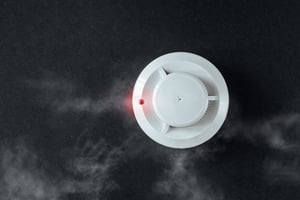A devastating tragedy has prompted a community in Pennsylvania to act to keep children safer while in childcare facilities. In August 2019, a fire broke out at an in-home childcare facility which operated 24 hours a day for parents who worked later shifts. The fire occurred in the early morning hours when everyone in the home was asleep. Investigators believe the fire started with an extension cord that ran under the couch on the first floor. While the provider and two teenagers at the home were able to escape, five children who were asleep on the second floor did not. The children, whose ages ranged from nine months to eight years old, died of smoke inhalation. The only smoke detector in the home was in the attic, two floors away from where the fire started.
The heartbreaking loss of so many young lives shook the community in Erie, and in the year since the fire, some significant changes have taken place. All childcare facilities are required to register with the fire department and receive a yearly inspection. These inspections have proven very useful for facilities to evaluate their fire evacuation plans and to ensure they have adequate safety equipment like smoke detectors, fire extinguishers, and exit lighting. These safety measures will hopefully go a long way in preventing another devastating fire.
Safety Tips
It’s important for providers to consider fire safety in childcare facilities large and small. Here are a few fire safety tips for childcare providers:
- Work with local fire departments and/or a certified fire suppression contractor to ensure the facility has enough fire extinguishers for the space. Extinguishers must be serviced annually to ensure they’ll work properly.
- Facilities must be equipped with enough smoke detectors to alert everyone if a fire breaks out. At a bare minimum, smoke detectors must be located on each floor and outside of each sleeping area. Local fire inspectors should be able to help make sure a facility has enough smoke detectors. Carbon monoxide detectors should be installed, as well.
- Post evacuation routes and keep routes clear and well-lit. Plan for where children and teachers will meet and gather in the event of a fire. It’s very important to regularly practice fire drills. This helps children and staff know what to expect and will reveal any issues with evacuating the building.





